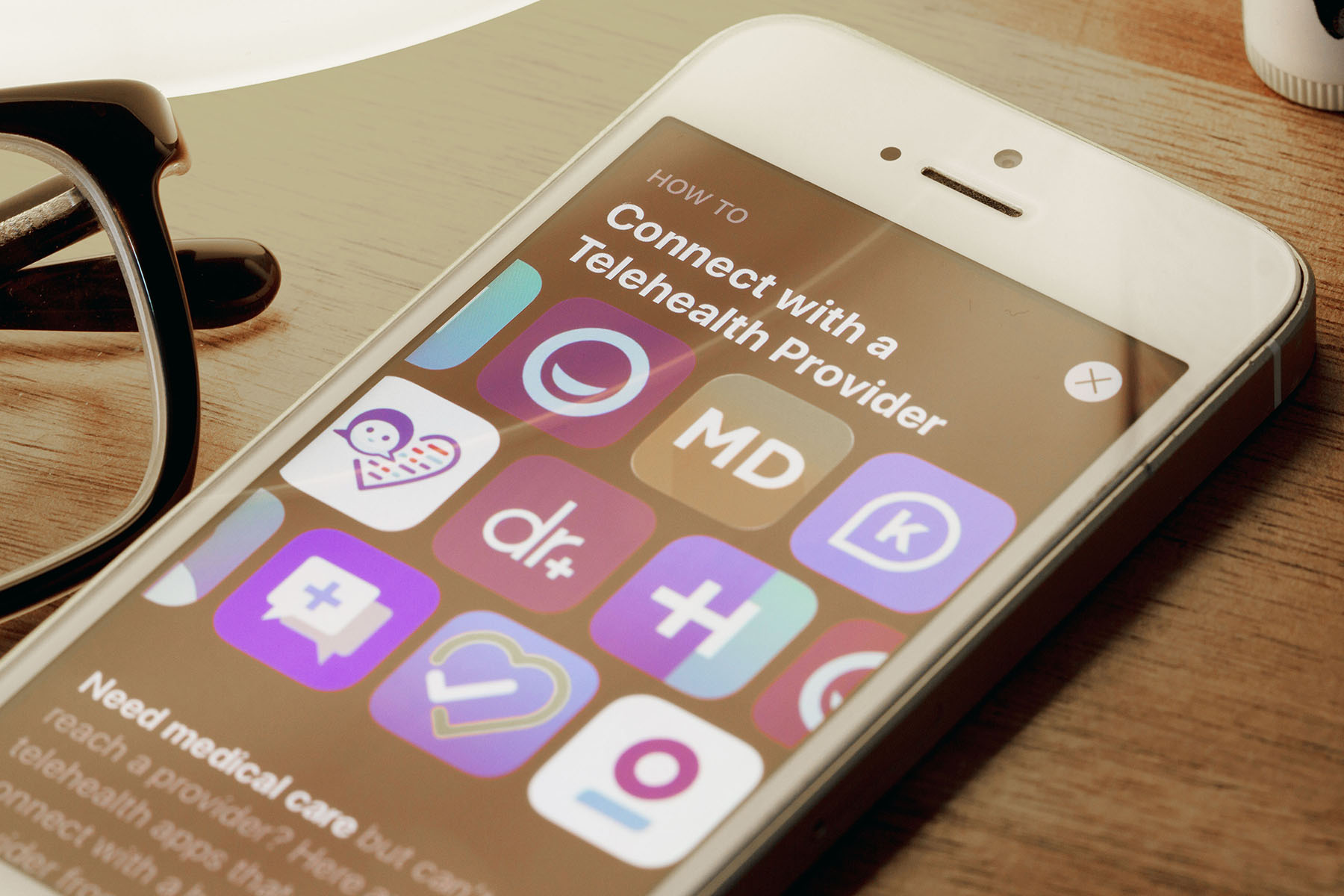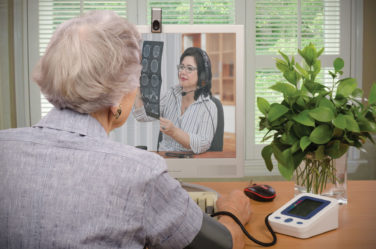The idea of what constitutes the “point of care” is evolving. At its heart, the point of care has always revolved around the when and where patients are making decisions about their health. Often, these moments are happening in the presence of their healthcare provider (HCP), especially in-person at doctor’s offices. But now patients can also see an HCP via telehealth or chat with them through an online patient portal. They can also seek care at retail health clinics associated with their local pharmacy, sign up for subscription/membership-based care such as One Medical, or download care-based apps like BetterHelp or Talkspace. The point is point of care is now seemingly everywhere.
In fact, in a July 2022 survey of 1,004 adults in the U.S. by Carenet Health, 45% said they received care at a non-traditional care venue, which include retail locations (51%), virtual care (34%), apps (11%), or subscription/membership services (5%). Furthermore, 95% of those who pursued non-traditional care would likely do it again in the future. That’s not to say they are no longer seeing their doctors. Of the 86% who visited their primary care physician in the last year, 93% said they did so in person.
What that does mean is marketers need to rethink their point of care strategies to consider all of the places and moments when patients could be making a critical decision about their health, which can go beyond even the traditional and non-traditional care sites mentioned here. To help you do that, PM360 asked 10 experts:
- As the concept of the point of care expands beyond physical locations to include more virtual care options, how does this evolution impact point-of-care marketing strategies? How do you determine the best places to invest the portion of your marketing budget devoted to point of care? What kinds of point-of-care initiatives prove to be the most impactful?
- With more options for HCPs to interact with patients virtually, what are the best opportunities within these virtual settings for life sciences marketers?
- How can marketers develop better omnichannel point-of-care strategies that combine in-person materials a patient may see in a waiting room, exam room, pharmacy, etc. with digital materials that re-engages them after they leave a physical point-of-care location?
- Considering the anxiety many patients face in the moments before a doctor’s visit and their reluctance to discuss every detail related to their health with their HCP, what can marketers do at the point of care—either in-person or virtually—to enable more open and fruitful conversations?
 As point of care expands to more virtual care options, it opens a lot of exciting new opportunities for patient engagement. To help evaluate what virtual point-of-care opportunities are right for you, follow these steps:
As point of care expands to more virtual care options, it opens a lot of exciting new opportunities for patient engagement. To help evaluate what virtual point-of-care opportunities are right for you, follow these steps:
1. Put yourself in the shoes of your patients. If possible, get a login to the platform and get hands-on experience with the features and use cases of the platform. This design-thinking style of approach can help you better understand how it helps patients and the opportunities for you to engage.
2. Understand how precise you can get. Are you reaching every patient within a particular disease category or can you get highly targeted? This becomes especially important in the spaces of rare disease, oncology, or other therapeutic areas where patients are much harder to reach.
3. Determine if the virtual point-of-care solution is scalable or reaching a niche segment. This involves understanding the current patient base on the platform as well as the plans for growth. I often look to see if the point-of-care solution is truly differentiated and has key partnerships, such as being an exclusive partner with a specific EMR, a large payer, or within a large footprint of practices.
4. Learn the capabilities for executional reporting and measuring the impact to the business. For example, does the virtual point-of-care solution provide data on reach and platform engagement? Will you be working with a third-party analytics company or your internal analytics team to measure lift? Is there potential for a survey with patients to hear directly from them on their experience?
5. Can you optimize? For example, if you find that educational content in a patient navigator works but alerts and text messages don’t, are you able to right-size the program using this information?
 To develop better omnichannel point-of-care strategies, marketers need to focus on creating a seamless experience across all touchpoints that patients encounter while interacting with healthcare providers. Marketers now have the option to fully utilize a suite of products that will impact the patient before, during, and after visits.
To develop better omnichannel point-of-care strategies, marketers need to focus on creating a seamless experience across all touchpoints that patients encounter while interacting with healthcare providers. Marketers now have the option to fully utilize a suite of products that will impact the patient before, during, and after visits.
Digital signage can be used to display engaging and informative content in waiting rooms and exam rooms. Waiting room TVs and physical print digests can be used to promote health education and increase brand awareness. These tactics set the stage for the rest of the visit and post visit. Meanwhile, interactive touchscreen wallboards provide engagement opportunities in a more intimate setting within the exam room.
On these wallboards, interactive branded content will be displayed as the patient waits to see their healthcare provider, which gives the patient the option to visit the brand website and download information to their personal devices. Then during the visit, healthcare providers can utilize tools such as a 3D human anatomy app to help patients visualize their treatments and conditions. Exam room wallboards can also be customized with relevant interactive video content to enhance patient education.
Additionally, in-office and remote monitoring diagnostic tools provide opportunities for brands to impact patients both in-office and at home. This full suite of capabilities allows for an optimal omnichannel strategy.
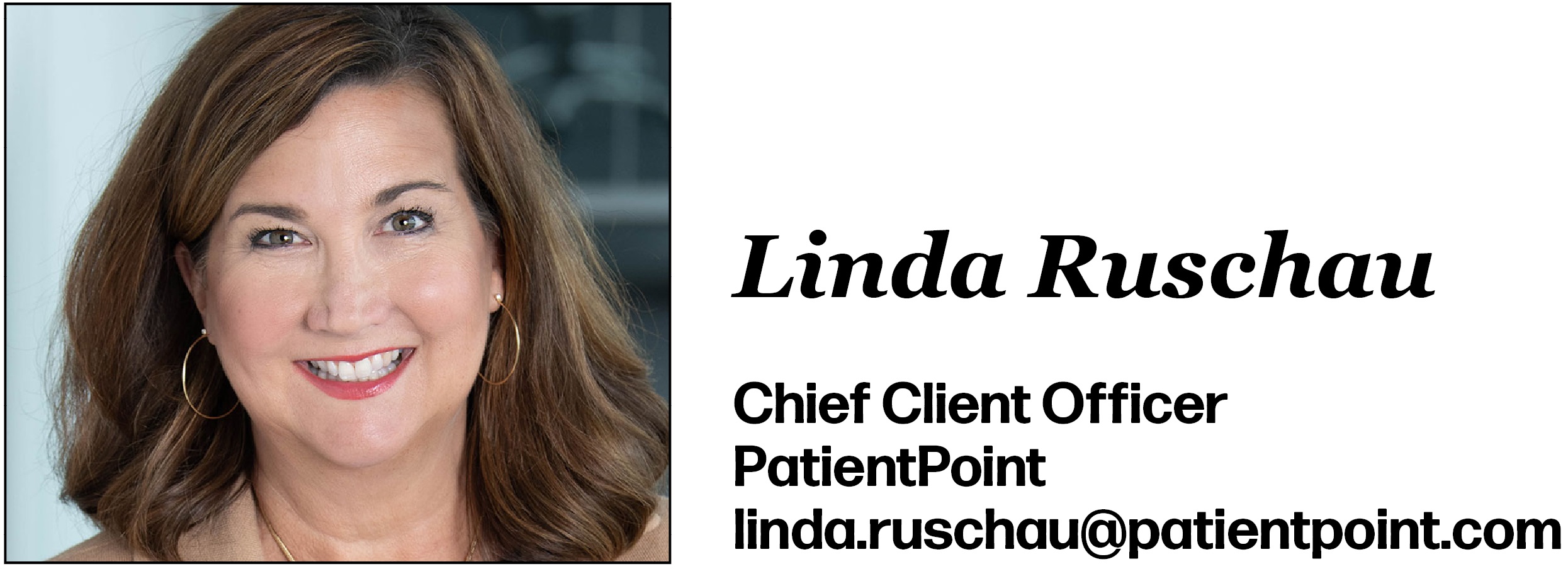 As marketers, we need to empathetically put ourselves in the mindset of the patient. So much of patients’ anxiety stems from a lack of information. In a recent survey of 2,000 Americans conducted by OnePoll on behalf of PatientPoint, 59% of respondents said they wished their healthcare provider would give them more educational materials on their symptoms and 55% said they wished their physician would speak to them in more detail about treatments and medication.
As marketers, we need to empathetically put ourselves in the mindset of the patient. So much of patients’ anxiety stems from a lack of information. In a recent survey of 2,000 Americans conducted by OnePoll on behalf of PatientPoint, 59% of respondents said they wished their healthcare provider would give them more educational materials on their symptoms and 55% said they wished their physician would speak to them in more detail about treatments and medication.
Remember the old Syms slogan “an educated customer is our best customer?” In pharma, an educated patient will be a more empowered and compliant patient. Simply put, transforming the care encounter from intimidating to engaging begins with equipping patients with relevant and easy-to-digest information that encourages and empowers them to speak up, ask questions, and learn more about treatment options. Some of the most successful campaigns I’ve seen pull the patient into the creative by allowing them to see themselves with varied ethnicities, gender, and ages.
Humanize Your Messaging
In point of care, meet the patient where they are—in that moment with their doctor. How can you personalize and humanize the message? Consider patient testimonials that make your drug relatable, ways to eliminate cost barriers with savings offers, and for the more complex drugs such as injectables or infusions, support programs that can make the treatment less scary for the patient. Doctors may say take this home, refrigerate, then inject…what?! Can you imagine how intimidating this is for the patient?
The more we can truly support a patient’s health by providing relevant, personalized content, we don’t just allay their fears but increase comprehension, improve compliance, and help people live healthier lives.
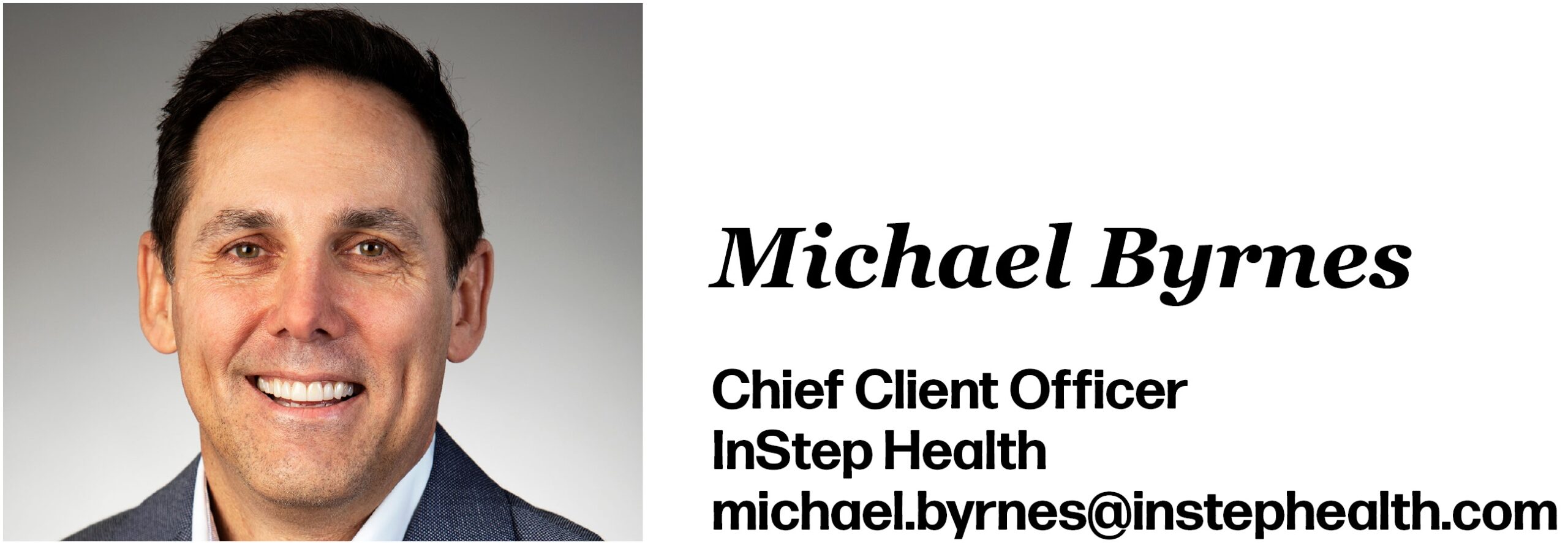 Healthcare messaging needs to reflect an understanding of where each patient is in their care journey. It’s hard for marketers to move past the old-world channel-centric goal of buying as much reach as possible for the lowest possible cost. But the more we do that as an industry, the more we miss our chance to connect with the right people at the right time. And when we inundate our customers with irrelevant or off-topic messaging when they are at critical moments in their journey, be that in a provider’s office or while researching health topics on a personal device, we waste those opportunities and clutter the sacred spaces of care.
Healthcare messaging needs to reflect an understanding of where each patient is in their care journey. It’s hard for marketers to move past the old-world channel-centric goal of buying as much reach as possible for the lowest possible cost. But the more we do that as an industry, the more we miss our chance to connect with the right people at the right time. And when we inundate our customers with irrelevant or off-topic messaging when they are at critical moments in their journey, be that in a provider’s office or while researching health topics on a personal device, we waste those opportunities and clutter the sacred spaces of care.
Coordinating Around a Shared Decision
Pharma marketers also need to embrace the reality that our audience is made up of individuals with a uniquely connected relationship with one another, one which depends on coordination and shared decision-making. The patient is the consumer but cannot make a purchasing decision without the prescriber. The prescriber has the power to make a product selection but will neither purchase nor use it. Patients and providers are supported by an extended healthcare team who do not have the power to prescribe nor the need to purchase but are important influencers who are trusted advisors to both groups.
To be effective, customer-centric omnichannel messaging should incorporate multiple high-impact tactics for each customer segment across several stages of the care journey. This messaging should be consistent across various media, including video, samples, brochures, digital, print, and kits, so the shared decision-makers are on common ground in their understanding of your treatment. And to be sustainable, omnichannel methodology must include measurement that accounts for performance among key customer segments and the impact each marketing tactic has on each audience segment.
 Life sciences marketers are increasing product awareness and pull-through by adopting point-of-prescribe digital support programs and creating new digital pathways. Impactful point-of-care marketing resources include providing digital HUB support for patient enrollment, messaging HCPs at point of prescribe with available patient support programs, and informing HCPs at the point of prescribing if there is a limited network of pharmacies that can fill a specialty medication.
Life sciences marketers are increasing product awareness and pull-through by adopting point-of-prescribe digital support programs and creating new digital pathways. Impactful point-of-care marketing resources include providing digital HUB support for patient enrollment, messaging HCPs at point of prescribe with available patient support programs, and informing HCPs at the point of prescribing if there is a limited network of pharmacies that can fill a specialty medication.
Eliminating Barriers and Physician Frustration
Pharma is investing at the point of care to help providers overcome prescribing hurdles and remove barriers for patients to start and stay on medication. A streamlined “entry point” for the physician to initiate a specialty medication eliminates provider frustration. As pharma shifts to digital enrollment forms to capitalize on the trend towards the e-prescribing (eRx) mandate that impacts 75% of our U.S. population, it is estimated that less than 10% of patient enrollment into support services is completed electronically today. We anticipate this will increase as life sciences companies experiment with hub-lite models, streamlining the prescribing process with digital eRx-enabled forms or portals, and shifting to a single non-dispensing pharmacy to initiate patients into patient support services and support patients for the first 90 days after fill.
Point of care is proving to be a pillar in most digital marketers’ strategies in 2023. As the point of care expands digitally both at the point of prescribe and beyond, it is also becoming a mainstay of the marketing plan. The industry has an opportunity to improve the customer experience for both physicians and patients through innovative life sciences marketing programs that can be measured, impactful, and easily implemented within the physician workflow.
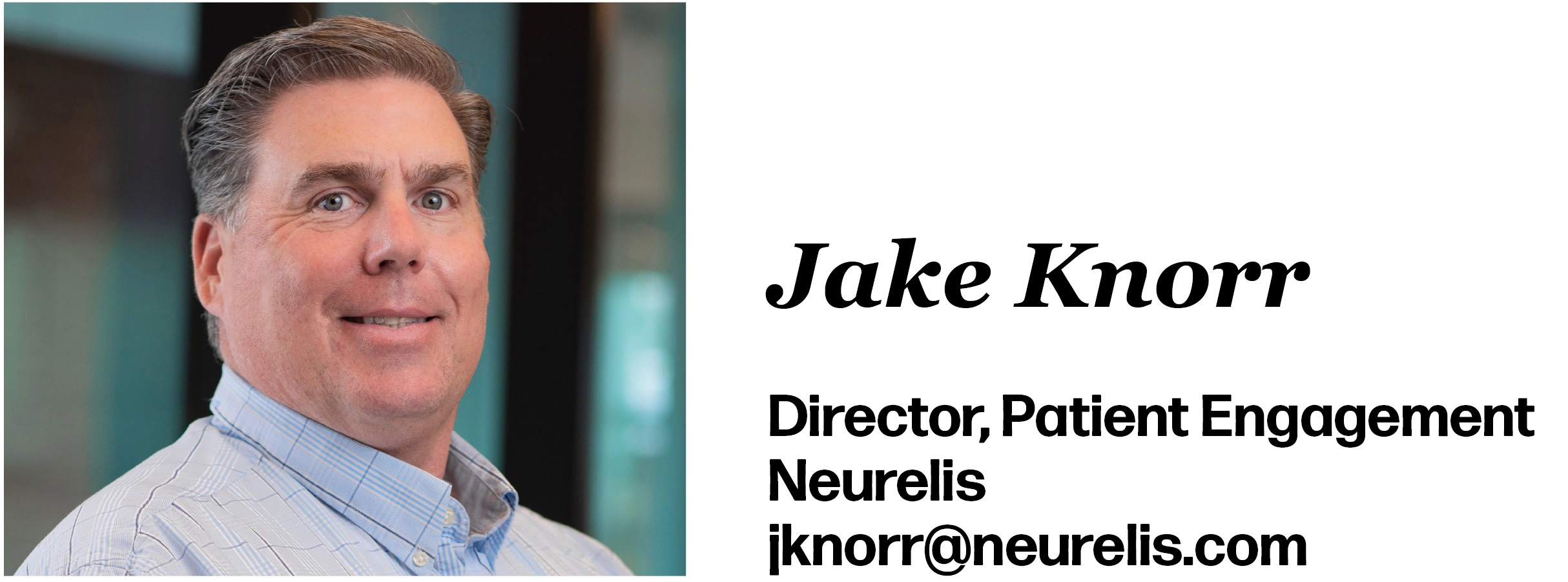 In order to develop better omnichannel point-of-care strategies, marketers should focus on combining in-person and digital materials in a cohesive manner by using various tools and technology such as:
In order to develop better omnichannel point-of-care strategies, marketers should focus on combining in-person and digital materials in a cohesive manner by using various tools and technology such as:
- Interactive digital kiosks in waiting rooms to educate patients about a brand’s products
- QR codes on in-person materials that redirect patients to a brand’s website or digital resources
- Personalized email campaigns that follow up on a patient’s recent visit and offer additional resources
- Text message campaigns that offer reminders, follow-up information, and support
- Mobile apps that allow patients to access educational resources and connect with their HCPs
In order to help patients feel more relaxed and open to having conversations about their health, marketers can implement various programs and initiatives such as:
- Providing educational resources in a non-intimidating format (e.g., videos, infographics)
- Creating a calming environment in the waiting room through lighting, music, and other sensory experiences
- Offering virtual/telehealth pre-appointment consultations to help patients prepare for their visit
- Partnering with HCPs to offer support groups or counseling services
- Developing brand-sponsored educational events (e.g., health fairs, workshops) to create a supportive and informative community.
Overall, the key to successful point-of-care marketing strategies is to make sure they are patient-centric, using a combination of in-person and digital materials to create an omnichannel experience that helps patients feel supported and informed. By focusing on the patient’s needs and experiences, marketers can create more open and fruitful conversations and build stronger relationships with both patients and healthcare providers.
 In today’s healthcare environment, it is more important than ever to think holistically about the patient experience. Patients want to be treated as individuals and expect a personalized experience throughout their care journey. This translates into building patient-centered communication to resonate with the diverse audience base that point of care reaches. It’s crucial to incorporate multiple creative versions that speak to different generations and ethnicities and that consider the unique characteristics of those target audiences. Messaging should remain consistent, but not identical, across each version for optimal brand recall.
In today’s healthcare environment, it is more important than ever to think holistically about the patient experience. Patients want to be treated as individuals and expect a personalized experience throughout their care journey. This translates into building patient-centered communication to resonate with the diverse audience base that point of care reaches. It’s crucial to incorporate multiple creative versions that speak to different generations and ethnicities and that consider the unique characteristics of those target audiences. Messaging should remain consistent, but not identical, across each version for optimal brand recall.
Furthermore, the patient mindset differs significantly when in-office compared to receiving care at home. The patient journey now encompasses many new touchpoints than it did just a few years ago. The most successful creative is built specifically for each point-of-care environment while complementing existing assets for other channels.
Easing Patient Anxiety
A patient’s time may be limited with their HCP; however, extensive time is spent waiting in the office which may lead to patients ruminating or stressing themselves out. Transforming the doctor’s office from intimidating to engaging begins by providing the education patients need and sympathizing with the sometimes anxiety-inducing patient experience. These moments should be used to provide direct, concise messaging paired with a clear call-to-action for patients to discuss their unique concerns or treatment options.
Further resources should be provided to support and educate the patient. This can be achieved through QR codes on digital devices or long-form content in print materials such as condition guides where more extensive information can be provided. Including patient testimonials and initiatives can help facilitate a clear path forward and ultimately encourage other patients to advocate for their health and get the care they need.
 Developing a successful omnichannel point-of-care strategy requires a deep understanding of the patient, their journey, and perhaps most importantly, engaging creative that seamlessly spans channels. It’s easy to remember as WHO, HOW, WOW.
Developing a successful omnichannel point-of-care strategy requires a deep understanding of the patient, their journey, and perhaps most importantly, engaging creative that seamlessly spans channels. It’s easy to remember as WHO, HOW, WOW.
WHO: Create a Personal Connection with Your Patient
Patients are people—not a list of demographics. Take the time to evolve demographics into design personas that you can speak to. Give them a name, an occupation, and a personality. What’s their story? Their motivation? What is important to them? It’s hard to connect with a woman 18-65 with allergies—it’s too generic, broad, and impersonal. But you can put yourself in the shoes and mindset of a well-defined persona.
HOW: Map Their Journey
Once we know exactly who we’re talking to, we can map their journey. We can understand what they know/don’t know, what’s important to them, where they’ll go, and how we can engage them. We can then define key messages, channel tactics, and a common thread to drive consistency across touchpoints.
WOW: Create Engaging, Personalized Content
Content is king—but it must break through the clutter to transcend channels. Create a story that speaks clearly, sincerely, and directly to your patient in a tone appropriate for the channel. Keep it educational with a clear call to action relevant to the tactic, and WOW with a six-word story and captivating key visual. Personalize content to the channel while enabling recognition with the WOW.
In summary, developing an effective omnichannel point-of-care strategy requires you to know WHO your patient is, HOW you can connect with them, and what content to create to WOW them. By doing so, marketers can create a seamless patient experience that builds trust and improves outcomes.
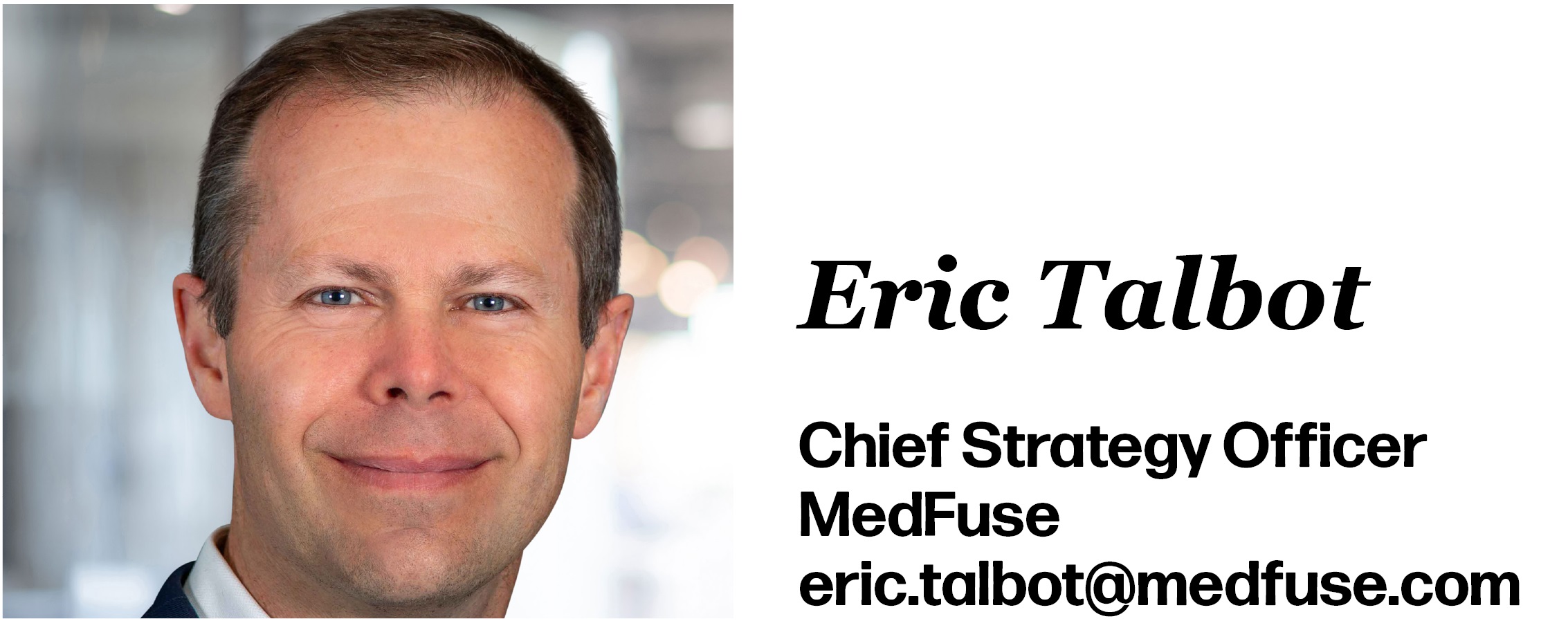 Data has shown point of care is an effective and efficient channel to reach patients and HCPs. And good strategy comes from good data and analysis. Prescription and medical claims data will quantify opportunities of greatest value and fit with brand objectives. Anonymized patient-level data (APLD) should also be used to identify and target segments of patients and HCPs with the appropriate messages.
Data has shown point of care is an effective and efficient channel to reach patients and HCPs. And good strategy comes from good data and analysis. Prescription and medical claims data will quantify opportunities of greatest value and fit with brand objectives. Anonymized patient-level data (APLD) should also be used to identify and target segments of patients and HCPs with the appropriate messages.
Advertisers should not look for a single silver-bullet tactic, but instead focus on a mix of channel tactics that align with the patient journey. The mix of tactics and the messaging should be customized to create an opportunity for a more personalized engagement with the patient and/or HCP at the point of care.
Moving Point of Care Toward Patient Selfcare
Point of care is the final mile of the patient’s journey. The development and growth of telehealth has enabled point of care to go beyond the moments when treatment decisions are made and prescriptions are filled. Telehealth and point of care can now play a role in patient adherence via tactics such as live remote-patient monitoring. Although this is still an emerging space, remote monitoring and Internet of Things (IoT) suggest point of care will move beyond patient-HCP care to patient selfcare.
Measurement of hundreds of campaigns has proven that all tactics within the point-of-care mix have been able to positively impact brand performance across a range of KPIs. Understanding that all point-of-care tactics are effective, it is critical to look at the first steps in the planning cycle to maximize this effectiveness. The performance of a point-of-care campaign is heavily influenced by targeting and segmentation. Quality targeting starts with quality data and analysis that aligns segments, targets, and brand objectives. Analyze, plan, execute, measure, revise.
 Across numerous therapeutic categories, especially gastrointestinal, dermatology, and mental health, patients feel embarrassed or reluctant to discuss their symptoms with their doctor. Additionally, some patients underestimate the severity of their symptoms and the impact it has on their daily lives. This mentality can lead patients to believe they should continue using OTC medicine to try and manage their condition long term, or that their symptoms aren’t severe enough to see a doctor and get a prescription.
Across numerous therapeutic categories, especially gastrointestinal, dermatology, and mental health, patients feel embarrassed or reluctant to discuss their symptoms with their doctor. Additionally, some patients underestimate the severity of their symptoms and the impact it has on their daily lives. This mentality can lead patients to believe they should continue using OTC medicine to try and manage their condition long term, or that their symptoms aren’t severe enough to see a doctor and get a prescription.
Delivering relevant content to the right patients is the foundation to enabling more fruitful conversations at the point of care, regardless of where the discussion is taking place. Meeting patients with messaging that directly relates to where they are in their healthcare journey opens the door for more impactful and honest patient-HCP conversations. For example, many patients in these therapeutic categories are highly symptomatic but haven’t yet been diagnosed; reaching and providing them with tailored resources such as doctor discussion guides with clear, direct questions or symptom checkers before they meet with their HCP can help empower them to confidently speak up about their condition, which can lead to better patient outcomes.
Content should also be easily digestible, designed to resonate with different audience types, and engage those who otherwise may be reluctant to discuss these conditions with their doctor. Most importantly, it’s crucial to message patients in a private, safe environment that lets them engage with content in a way they’re most comfortable. Messaging that drives a sense of urgency to treat a condition or address symptoms, while also providing reassuring efficacy data and savings options, can help activate an anxious patient before their HCP discussion. Patients need the right tools and disease education to participate in their critical treatment conversations.


